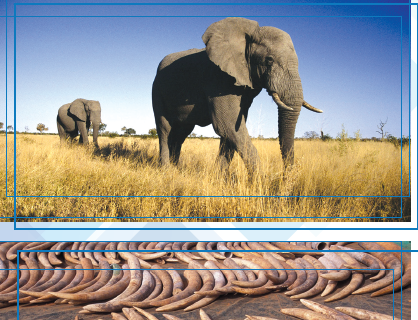THE AFRICAN ELEPHANT
THE AFRICAN ELEPHANT Weighing up to 6000 kg (6.6 tons) and measuring up to 3.3 m (10 ft.) at the shoulder, the African elephant is the world’s largest land mammal. It is characterized by its massive trunk, long curved tusks, and enormous ears.
As African elephants act as a keystone species, it is vital to take steps in their conservation. The African elephant is endangered right now. For centuries, humans have hunted these elephants for their ivory tusks. The ivory is used to make billiard balls, jewellery, chess sets and piano keys. As human hunger for ivory has increased, the number of elephants has decreased. In the 1980’s the elephant herds become so small that most African countries made it illegal to kill an elephant. Moreover, in the United States and the European Union importation of ivory is illegal. However, other countries have continued to buy ivory. Because they know they can get money for elephant tusks, illegal hunters are still killing elephants. Every year there are fewer elephants.
So what you can do to help? There are several ways to help support African elephants. One way is to participate in eco-tourism. Boosting Africa’s economy through eco-tourism helps placate local residents who view elephants as pests. Decreasing the demand for ivory is essential. Never buy, sell, or wear ivory. In addition, you can help provide captive elephants with the best possibly life. Encourage zoos to create environments similar to African elephants’ native habitat.

